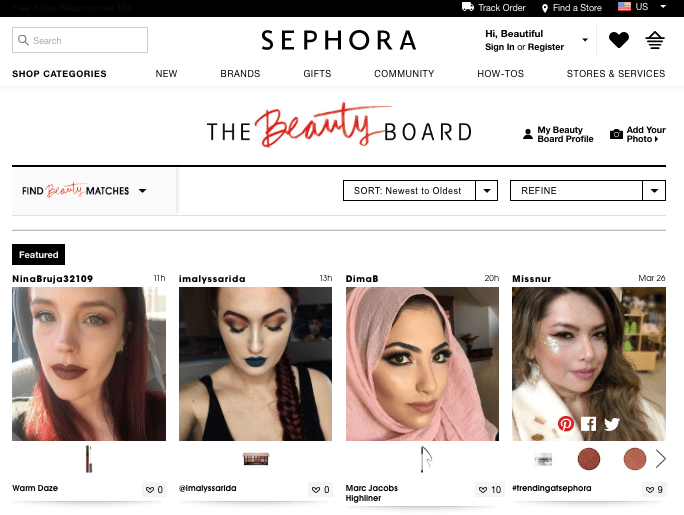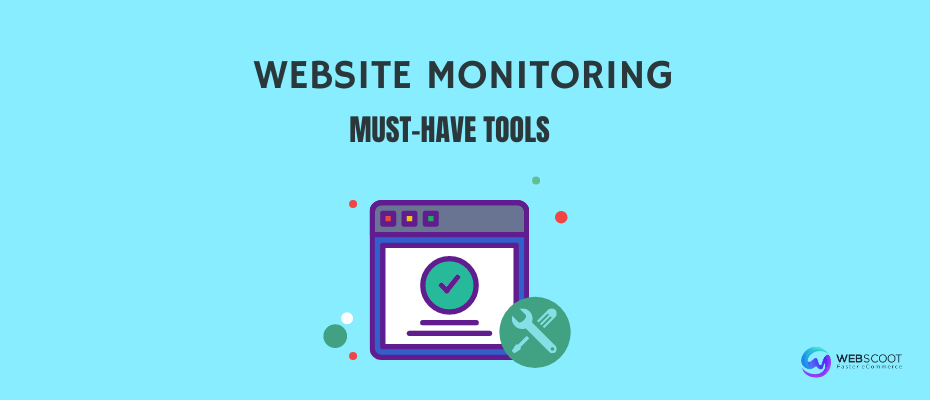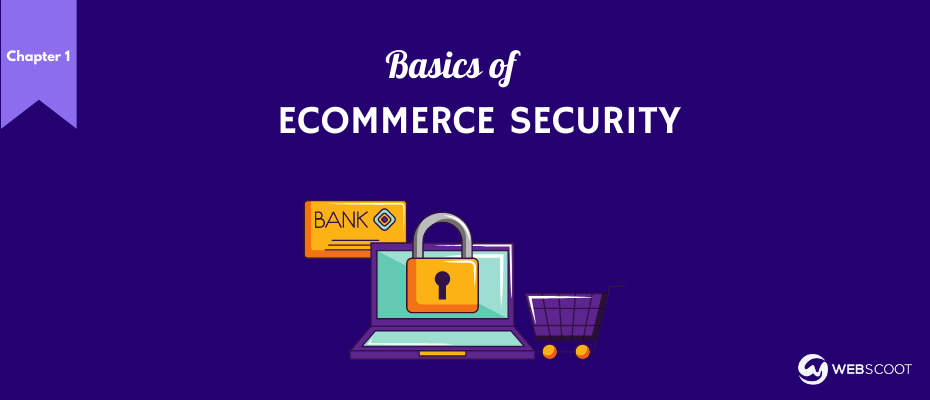‘Don’t sell a product, sell an experience‘
The above quote is no less than a gospel in the modern-day marketing world. Any marketer worth his/her salt is aware that the customers of today are well-informed, and the market is brimming with competition.
This is why selling a product today involves proper communication of the extra value it will provide to the customer. The idea is to portray a product in such a way, that it’s not just appealing to your customer’s wallet but also their heart.
Storytelling is a popular and effective way of achieving this.
In this article, we’re going to talk about:
- Why use Storytelling in eCommerce?
- What does Storytelling mean for eCommerce?
- eCommerce Storytelling Tips: 6 Tips for a Succesful Brand Story
- Create a story around your customer
- Research your Competition
- Strive to be Different. Not Better
- Include User-Generated Content
- Incorporate your Journey
- Choose your Storytelling Medium Wisely
- Conclusion
Why use Storytelling in eCommerce?
We all fall in love with stories every day. We follow lifestyle bloggers, thought leaders, personal blogs, etc on every platform so that we can engage ourselves in stories that resonate with us, inspire us, and give us confidence.
The details, the journey, and the outcome draw our attention, and we’re always looking for tit-bits to inculcate in our own lives.
A customer might forget the extra features a product offers, but he/she will never forget the product experience and how it made them feel.
Stories have the power of converting passive buyers into recurring customers. If your brand’s story is compelling enough, then your target audience will not only buy your product, but also swear by it.
Customer loyalty and advocacy are two invaluable assets that are bound to bring in continuous revenue in the long run.
All in all, storytelling can help your brand:
- Stay relevant
- Go viral
- Form a community around your product
- Increase brand loyalty
- Differentiate from competitors
- Increase engagement and online followers
What does Storytelling mean for eCommerce?
Storytelling as a branding strategy isn’t really a new concept. However, there are only a few brands that are able to get it right. Half-baked stories or superficial narratives are more common than brand stories that nail the brief and are able to successfully engage their audience.
This is because narrating stories about people and instances around us is a natural process. However, humanizing a brand and breaking the seller-customer barrier is a completely different ball game.
You’re required to take the reality of your company and what it stands for- to compose a relatable account that:
- Puts your customers at the forefront of your priorities
- Relays the beliefs and values your company stands for
- Connects your beliefs and values with that of your customers
- Creates an impact on your customers and has a significant recall value
eCommerce Storytelling Tips: 6 Tips for a Succesful Brand Story
There are a lot of things one must take into consideration while crafting a story for their brand. So let’s list them one by one.
1. Create a story around your customer
When your target customer looks at an ad or marketing campaign for your latest product, they should be able to see themselves as the protagonist of the story. It’s your job to convince them, that your product can fit in their lives and make a difference.
For this, it’s essential to research your prospective audience thoroughly. Keep in mind that while researching, you need to get an insight into customer needs as well as their character traits.
Once you’ve put together a decent customer profile, you need to figure out how you can concoct a story that your customers can easily imagine themselves being a part of.
For example, if your e-store sells stylish eyewear, your customers should be able to picture themselves pulling off that eyewear without hesitation.
In order to achieve this, a lot of eCommerce businesses today tap into the power of ‘influencer marketing‘. Social media influencers have gained a lot of popularity and seem to have a firm hold on their audience.
Their viewers listen to them and take their recommendations seriously. If you’re a lifestyle brand especially, getting influencers to sample your products, recommending them, and conveying your brand identity could do wonders for your sales.
Apart from this, there are a few more questions you need to ask yourself while creating a story:
- What are your ideal customer’s goals? What do they want to achieve?
- Why will purchasing your product make your customer feel better?
- More importantly, how will it make them feel?
- Will they be able to relate to your story?
2. Research your Competition
Competition research is a rule of thumb that applies across almost all aspects of a business, from product creation to marketing and sales.
Observing your competitor’s storytelling techniques will help you assess what works and what tanks in your industry.
While studying your competitors, make a list of:
2.1. The emotions your competitor is eliciting in your customer
How is your competitor trying to make their customers feel? Every story strives to get a reaction from a consumer. During your research, pinpoint which sentiments your competition is trying to arouse from your audience. Is it happiness? Excitement? Motivation?
Let’s look at a few examples:
- Nike’s ‘Just do it’ campaigns aim to inspire its customers to achieve their goals.
- Mountain Dew’s ‘Darr ke sage Jeet hai‘ (beyond fear, there’s a triumph) aims to motivate its audience to be adventurous and daring.
- Dove’s ‘Campaign for real beauty’ aimed to encourage women to re-define beauty standards and express what ‘actual beauty’ feels like to them. The point was to make women feel more comfortable and confident in their own skin.
2.2. What narratives is your target audience more responsive to?
Different brands in your niche will be using different narratives to strike a connection with customers. It’s imperative to identify which stories are resonating with your audience, and which ones they’re simply scrolling over and ignoring.
Does your audience like to be inspired? Do they like a story that can make them feel good or give them reassurance of sorts? Do they like confirming to new social standards?
Mainly, you need to study the campaigns that have gone viral in your niche, as well as ones that have failed. From there, note down which ’emotional experience’ ties up perfectly with your audience, and which one misses the mark partially or completely.
2.3. Remember that all of this is for inspiration ONLY

While researching, it’s easy to get influenced by a competitor’s campaigns and subconsciously copying their style.
It’s important to study your competition in order to take a more practical and rational approach towards your storytelling, but it’s also crucial to not let their theme and ideas bleed into yours.
3. Strive to be Different. Not Better
We’ve established that your brand needs stories in order to get noticed in today’s hyper-competitive world. But, is it feasible to try to outsmart your competitors, when most of them are already well-established and successful?
No. It’s not.
Instead of focusing on how you can beat the competition, your target should be to create an identity of your own that communicates your uniqueness and authenticity as a brand.
No matter how saturated a particular market is, there’s always at least one thing your brand is doing differently than the others. Learn to identify that quality and capitalize on it by highlighting it in your brand’s narrative.
For example, Everlane, a retail brand chooses ‘radical transparency’ to make its brand image stand out. It reveals the factories where its products are manufactured, along with the actual cost of making a product, and the markup they charge.

Where most retail brands hide their markups and charge extra high than the actual cost price, Everlane chooses to shine by being honest with their customers. Something its followers really appreciate.
4. Include User-Generated Content
In eCommerce, because customers don’t come in contact with the product before making a purchase, they rely heavily on other people’s reviews and feedback.
A lot of brands leverage this in their storytelling. Getting your existing customers to share their experience with your audience is going to help build trust and accountability. Moreover, it will help your audience visualize how your product can make a difference in their lives.
The ways you can implement this technique for your eCommerce business are:
- Instead of writing product descriptions, display product stories on all your product pages if you can.
- Turn customer reviews into customer stories
- Here as well, you can use influencer marketing by turning influencers into your customers
- You can make ad campaigns out of your customer stories and experiences
For example, you can look at Sephora’s beauty board campaign:

Through this campaign, Sephora (an e-store selling skincare products & cosmetics) encouraged its customers to create and share their own looks using its products on social media. Then, they embedded those submissions on their own website.
What better example of user-generated content do we need? Your consumers are the ones using your product. They can supply you with stories that are better and more authentic than the ones you can come up with after days of research and composition.
Just remember, the customer is king, and if you can include the king itself in your story, it’s bound to grab eyeballs!
Out of all the eCommerce storytelling tips for better marketing, this one is a ‘growth hack‘ all online brands should try and follow.
5. Incorporate your Journey
Growth means journeying through ups and downs, evolving, and achieving your goals. An organization can’t achieve its objectives without improving their product and services for the benefit of its customers.
Your story should chronicle the past, present, and future vision of your company.
All brands start at the bottom, and then move up the ladder by refining and reforming their product and modus operandi. Conveying this to your customers means showcasing that you care about their needs and preferences.
If you’re creating a journey-story of your brand, here are some points you can include:
- Why did you choose a particular product to sell, or why did you enter a certain industry?
- What is the idea and vision you have operated on?
- How did you initially aim to serve your customers or improve their lives?
- Over time, what innovations or improvements did you make in your product in order to evolve?
- What part do customer response and feedback play in your journey?
- How have you endeavored to connect with your audience?
For example, you can read Netflix’s journey.
In this article, Netflix’s ex-VP of Product talks about the brand’s journey, from a DVD rental competing with established brands like Blockbuster back in the ’90s, to the most popular and successful online streaming service today.

From this story, spanning over 20 years, you can easily takeaway:
- How Netflix wants to portray itself
- How it wants its customers to feel
- How Netflix has improved its operations over the years
- How much importance customers and their responses play in their decision-making process
As a customer myself, the highlight of the story for me is the last point.
Netflix did a lot of A/B testing on their website and ran ‘focus groups’ of its audience before rolling out new announcements. If their focus group audience didn’t respond well to a new idea, they simply scrapped it.
As a user, this story tells me that Netflix takes a ‘user-first’ approach, which is impressive.
6. Choose your Storytelling Medium Wisely
Out of all the eCommerce storytelling tips we’ve discussed above, this is one you should NOT ignore. There’s no point in drafting incredible content if you don’t know what platform you should showcase it on. Here are some tips to give you an idea:
1.If you’re creating a story around your own journey, you can display it on:
- Your about us page
- Your Home Page
- Your Blog
- Platforms like Medium, LinkedIn Pulse, Buffer, etc
- Publishing houses in your industry
2. If you’re telling your story through an ad, you should run it on:
- All social media platforms like Instagram, Facebook, LinkedIn, etc
- Streaming services like Netflix, Prime, Hotstar
- Streaming channels like YouTube
3. If you’re going for user-generated content then you can share it on:
- Your product pages
- Social media posts
- Website home page
Conclusion
Phew! Storytelling is not an easy feat, but its definitely worth all the brainstorming and research in the world, provided you get it right.
An important caveat:
Read all the eCommerce storytelling tips and advice thoroughly, and try to follow them as best as you can. If you’re creating a story, go all out and don’t leave it an incomplete or superficial stage.
Don’t be afraid to experiment and refine your strategy!
If you have any queries, feedback, or suggestions, feel free to leave them in the comments below!
Interesting read: Make the Most Out of an Industry Conference

Divya loves writing and is passionate about marketing. When not trying to hone her skills, you’ll find her either reading or binging on TV shows.




nice tips divya
very well researched article divya